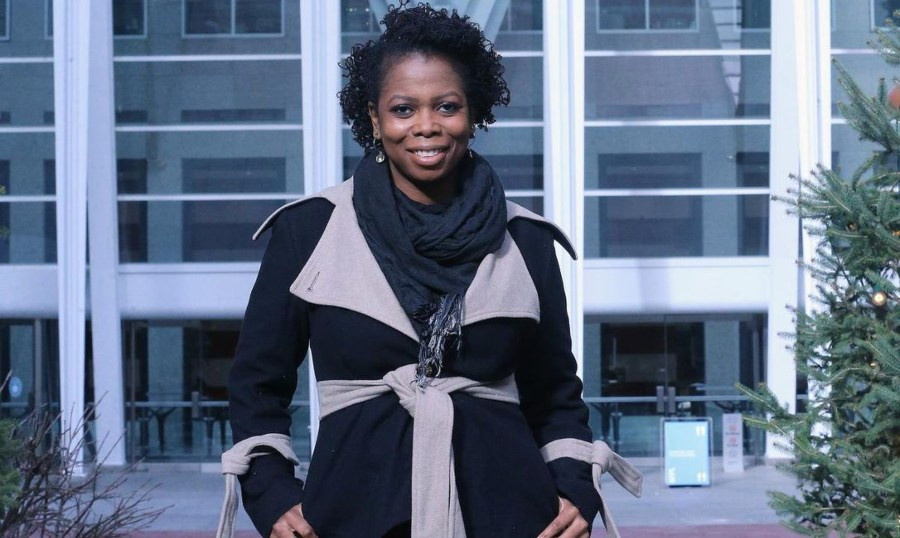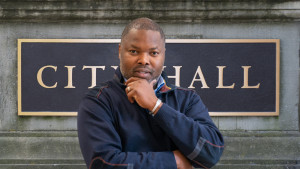Mitchell grew up seeing her father’s drafting board and the funny pencils around it. They interested her because she’d always been inclined toward creative design and building. By the 11th grade, she made a firm decision to become an architect.
“Besides enjoying it, it’s a creative outlet,” says Mitchell when asked about why she chose this career path.
“We create shapes, and we get to control the setting of spaces. Our work affects how you move and how you feel; it impacts the spirit. It’s rewarding to see something that was just a pencil sketch come together into something so large.”
She learned from some of the best, during her internship with a firm in New York City. Colleagues introduced her to the National Organization of Minority Architects, where she learned that only 0.2% of licensed architects in the United States were Black women.
“Roundup or round down, that's still zero,” she says.
Building equality in architecture
When Mitchell returned to Canada, she helped form Building Equality in Architecture Toronto (BEAT) and served as the organization’s Managing Director. Its mission is to empower women by creating learning, networking, and mentorship opportunities to support their retention and advancement across the architecture and design industry.
The collective was formed in response to studies showing that only 29% of people in architecture were women. A far cry from 0.2%. Mitchell joined the collective to ensure voices for communities like hers were discussed in equity-seeking environments like BEAT.
Growing pains
She didn’t set out to be a disruptor in architecture when she began her career.
Growing up in Hamilton’s French immersion school system, being the minority was nothing new for her. As she was often the only Black person in most industry rooms, however, it became something she felt obligated to address.
“I was initially hesitant to do so because, in a white male-dominated profession, I didn't want to pull the ‘race card,’” she says.
Eventually, she overcame that hesitation and told her story anyway. At a 2016 event, she spoke about the 0.2% of Black women in architecture and the need for more action to fill this gap. She recounts a moment when some students of colour came up to thank her for her presentation.
“They thanked me because nobody was talking about it,” she said.
Spreading the word
Following that event, a journalist reached out to Mitchell for a feature in the Globe and Mail based on the same number. Camille's story was also featured on CBC as a part of Emily Mills’ HERStory in Black project.
Mitchell went from not wanting to rock the boat on issues of race to gaining national attention for that very conversation in a matter of weeks.
Following these features, other Black professionals in design and architecture contacted Mitchell. They later formed the Black Architects and Interior Designers Association (BAIDA), where Mitchell currently serves as the Vice-Chair.
BAIDA addresses diversity, equity, and inclusion issues with design firms and postsecondary institutions through advocacy, mentorship, and community outreach.
Mitchell is committed to breaking down the industry and making it accessible for those who don’t feel like it’s for them. She explores what it could be like if today’s students lived in a more culturally informed society, and could benefit from a more global approach to architecture education.
Following the murder of George Floyd, Camille’s alma mater invited her to sit on the Advisory Board for the Racial Equity and Environmental Justice Task Force at the University of Waterloo School of Architecture.
“Architecture 101 starts in Africa with the pyramids, but we never went back to Africa throughout my education. All roads literally led to Rome,” she says. “Can we have exchange terms in Hong Kong? Or Nigeria? There are so many other locations where great architecture is happening.”
Shaping the future
Mitchell is a champion for the diversity of the work within the field and she is committed to breaking architecture down and showing the many ways young people can enter.
“When I give talks, I’m not saying ‘you need to be an architect like me.’ No, there are so many different people that shape how a building works, and I think that’s not really discussed in our communities.”
“I think if you love playing music, think about becoming a sound engineer and controlling the acoustics of the space. There are so many different people that shape how a building works, that I think are not really shared with us.”
Mitchell shares her expertise as a mentor serving around the province at school presentations and in various programs to share with youth ways they can chart a career path in architecture and design.
She believes that there’s work to be done around sharing the value of design with Black communities and notes the importance of getting in early to hold space.
“We’ve got to get in and reserve our spot at the table—not just take it, but ensure it’s there in the first place.”
Next month Mitchell will be recognized by the Ontario Association of Architects (OAA) with the G. Randy Roberts Service Award for her commitment to serving the membership and her dedicated action to getting good work done.

 By
By 





